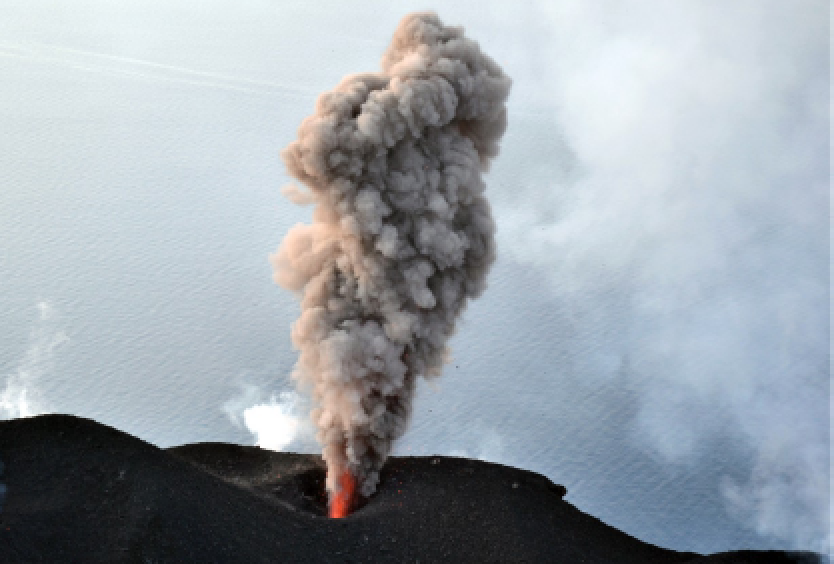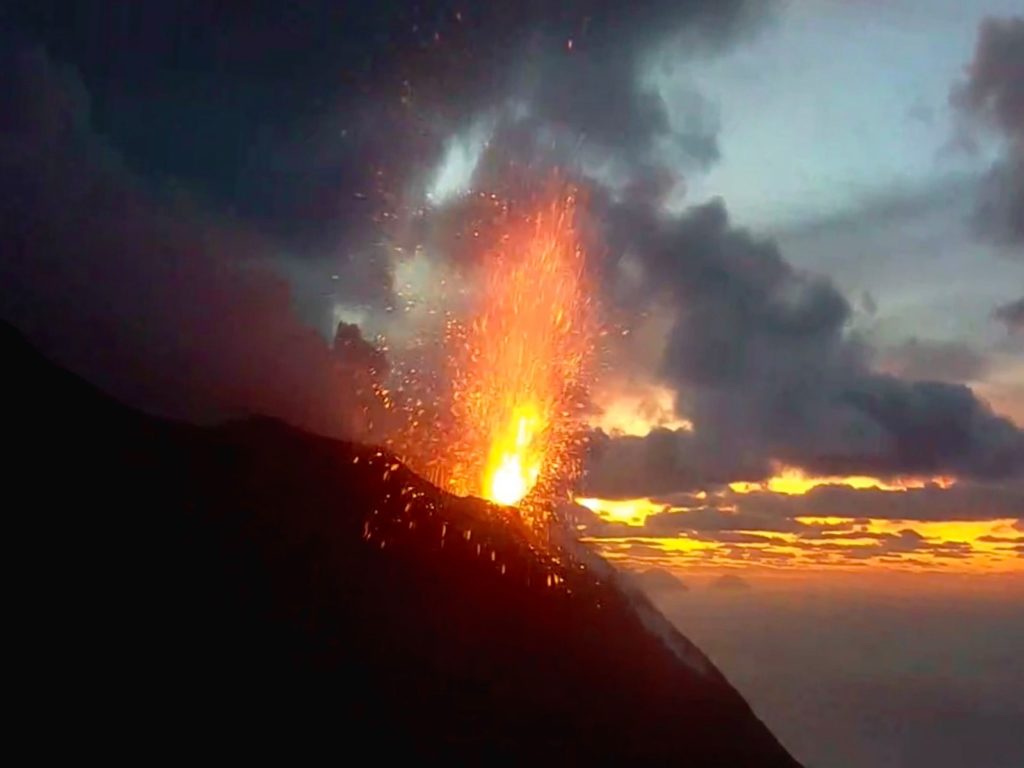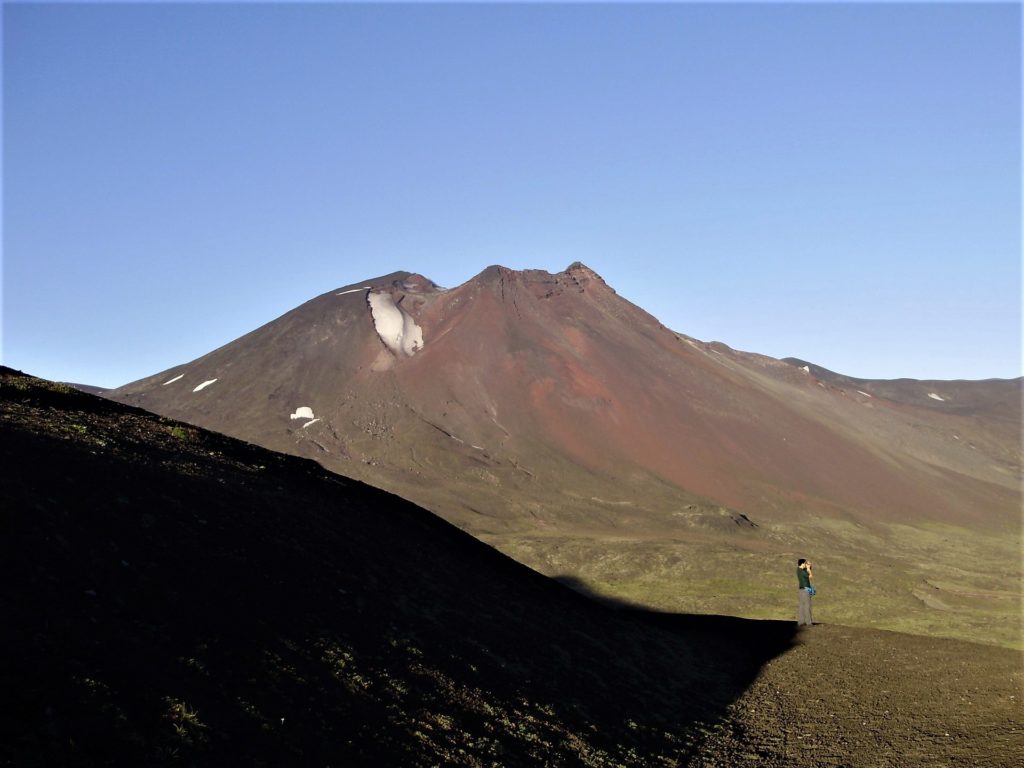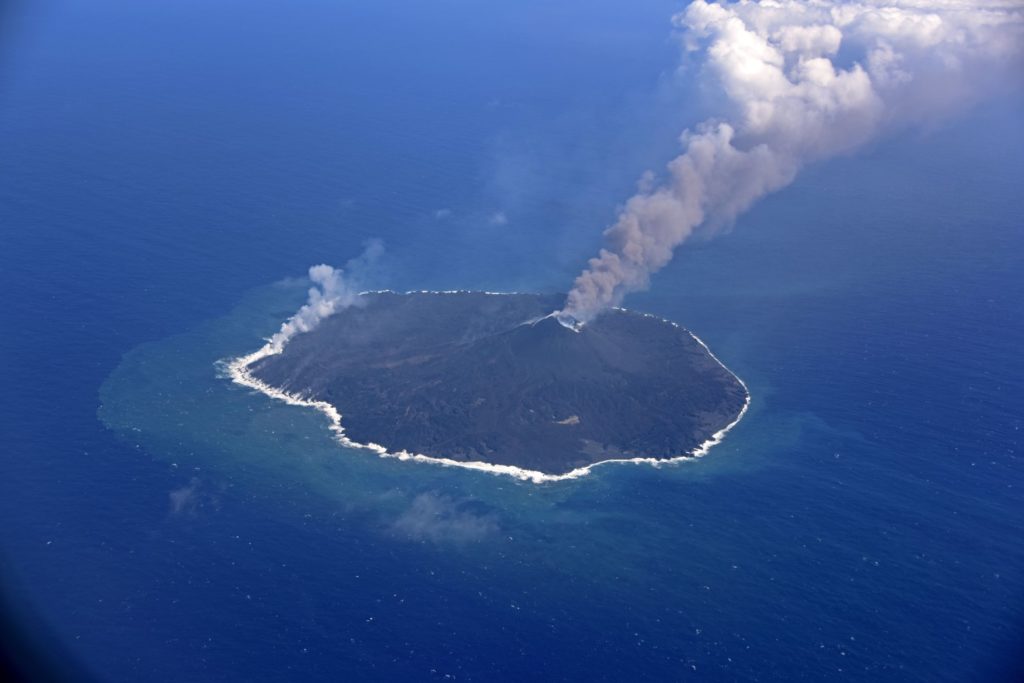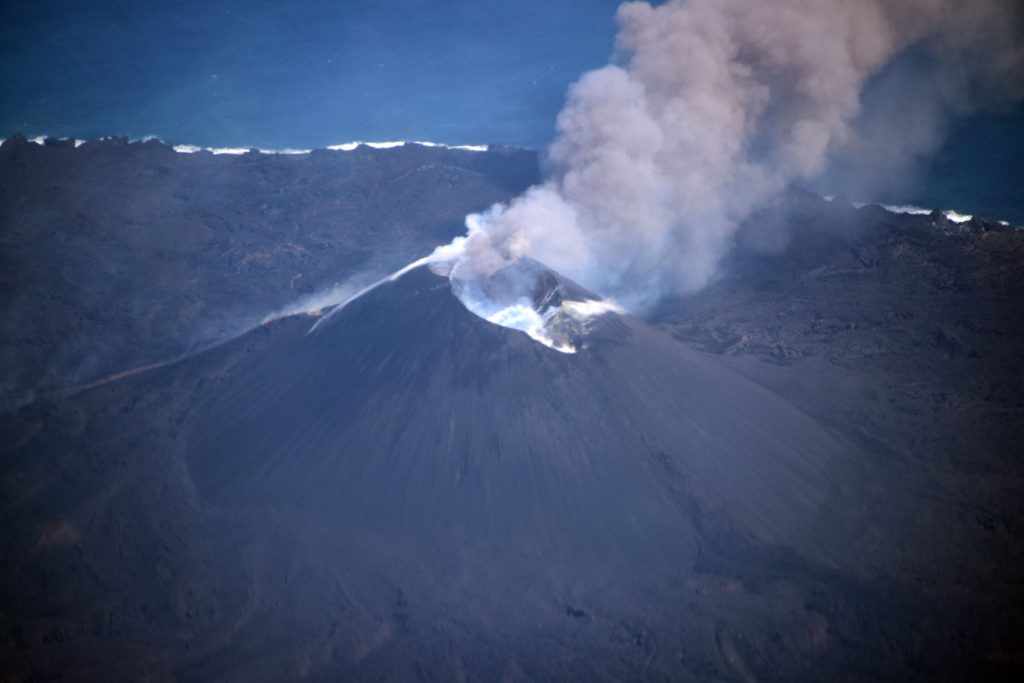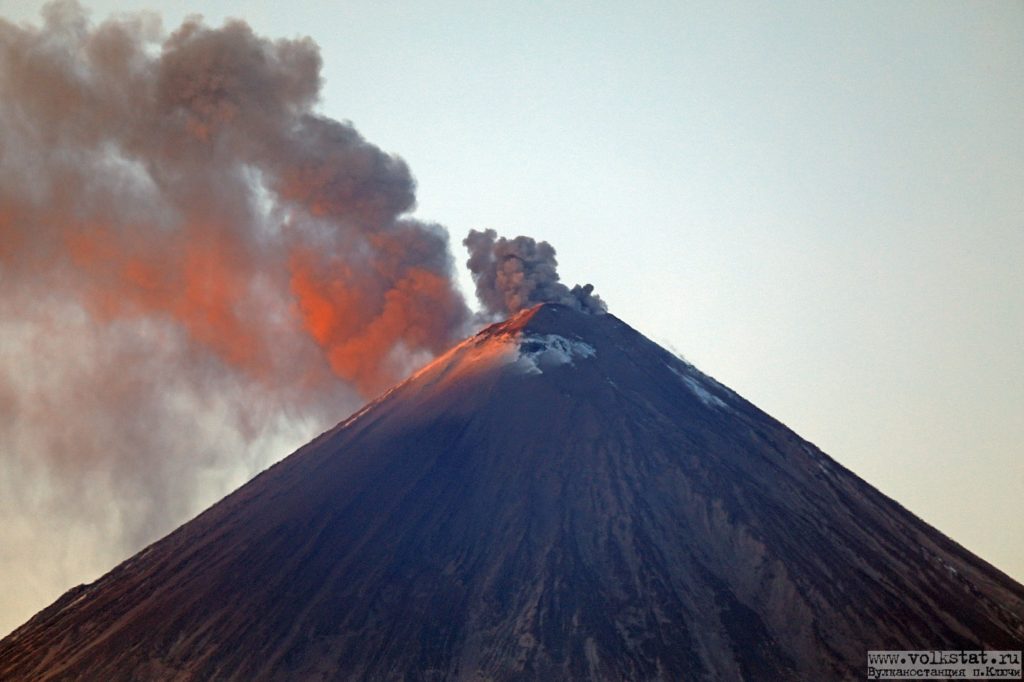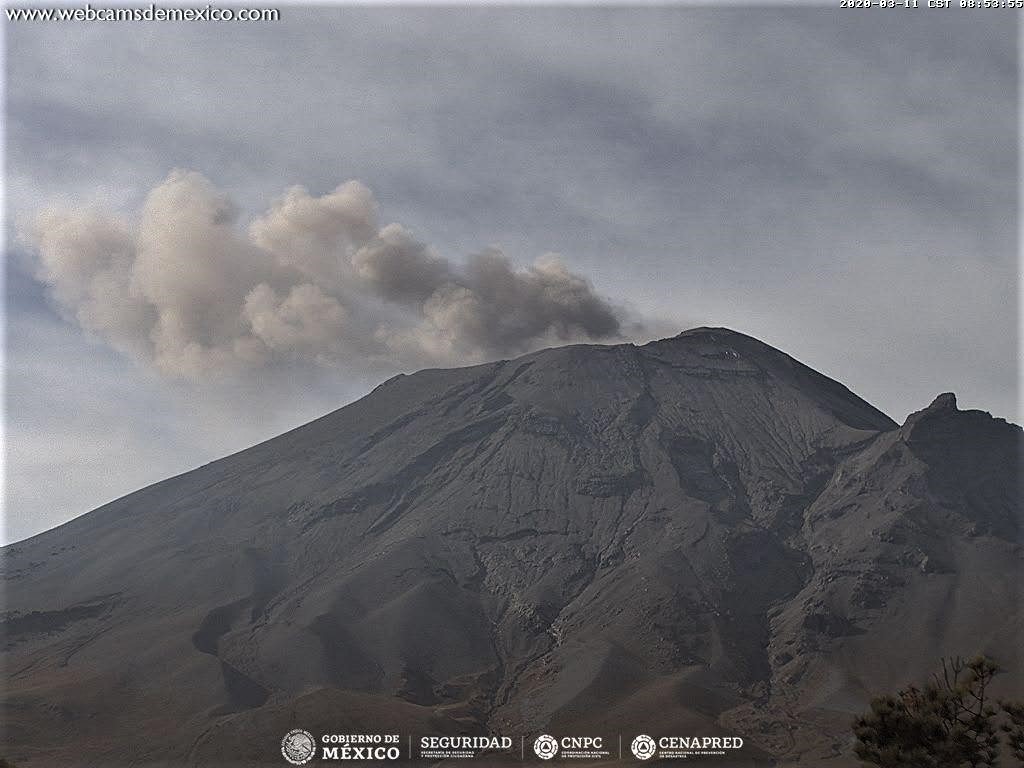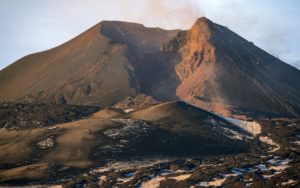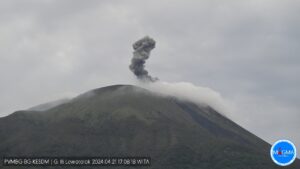March 12 , 2020 .
Italy , Stromboli :
Weekly bulletin from 02/03/2020 to 08/03/2020. (date of issue 10/03/2020).
SUMMARY OF ACTIVITY STATUS
In light of the monitoring data, it is highlighted:
1) VOLCANOLOGICAL OBSERVATIONS: During this period, a normal explosive activity of strombolian type was observed accompanied by degassing activities. The hourly frequency of explosions fluctuated between average values (11 events / h on March 03) and high values (24 events / h on March 7). The intensity of the explosions was mainly average in the area of the North crater and average in the area of the Center-South crater.
2) SEISMOLOGY: The seismological parameters do not show significant variations.
4) DEFORMATIONS: Stromboli soil deformation monitoring networks did not show any significant variation to report for the period considered.
5) GEOCHEMISTRY: The flow of SO2 is at an average level The last value of the CO2 / SO2 ratio is at an average value (last update on 02/09/2020). There are no other updates. The last value of the isotopic ratio of helium dissolved in the aquifer is at medium-low levels. The new sampling was done this week and we are awaiting the results.
VOLCANOLOGICAL OBSERVATIONS
The analysis of the images recorded by the cameras placed at an altitude of 400m, at an altitude of 190m and at Punta dei Corvi made it possible to characterize the eruptive activity of Stromboli. During the reporting period, the explosive activity was mainly produced by at least 3 (three) eruptive vents located in the area of the North crater and by at least 3 (three) eruptive vents located in the area of the Center-South crater . All the vents are located inside the depression which occupies the crater terrace.
In the northern zone, the explosions were mainly of variable intensity, from low (less than 80 m in height) to high (more than 150 m in height), emitting coarse materials (lapilli and bombs). In numerous explosions, the abundant fallout covered the outer slopes of the area overlooking the Sciara del Fuoco and the blocks rolled until they reached the coast. The average frequency of explosions in the North zone varied between 4 and 10 events / h. The explosive activity of the Center-South zone produced explosions of mainly fine materials (ash) sometimes mixed with coarse materials, with an average intensity (less than 150 m high) sometimes high (the products exceeded 200 m in height ). The frequency of explosions in the Center-South zone varied between 7 and 14 events / h.
The amplitude of the volcanic tremor generally had medium-low values.
Source : INGV.
Read the entire article : file:///C:/Users/Utilisateur/AppData/Local/Packages/Microsoft.MicrosoftEdge_8wekyb3d8bbwe/TempState/Downloads/BollettinoStromboli20200310%20(1).pdf
Photos : INGV , Web cam.
Chile, Antillanca – Casablanca :
Antillanca-Casablanca volcanic complex:
Yesterday at 6 p.m., the National Service of Geology and Mines raised the level of technical alert from Green to Yellow for the Antillanca-Casablanca Volcanic Complex, located in the Los Lagos region. The decision was made after a swarm of 77 volcano-tectonic earthquakes (due to rock rupture) recorded on March 9, with events of local magnitude up to M1.8, located around 2, 4 kilometers north-northwest of the Casablanca volcano. This seismicity is added to other episodes recorded at the end of January 2020 and August 2019, which are higher than the basic activity level of this volcano.
The technical alert means that the population is kept informed, according to the Sernageomín alert scale.
Consequently, the ONEMI Regional Directorate declares the preventive early warning of the civil protection system for the municipalities of Puyehue and Puerto Octay.
VOLCANIC ALERT LEVELS
The Sernageomín establishes 4 levels of alert; green – yellow – orange – red.
Green means safe for the people. Yellow means minor explosions or fumaroles, the notice is only intended to keep you informed and bi-weekly activity reports are issued. Orange signifies a likely increase in volcanic activity, and the advisory requests to stay informed, and there are partial restrictions on access to the volcano, as reports are daily. Red alert, is a major eruption imminent or in progress, the population is called to follow the instructions of the authorities and a possible evacuation.
Source : Volcanologia en Chile , diariofutrono.cl .
Read the diariofutrono.cl article : https://www.diariofutrono.cl/noticia/actualidad/2020/03/declaran-alerta-tecnica-amarilla-por-actividad-del-volcan-antillanca-casablanca?fbclid=IwAR25CsSItPlz7aH12EEJmWR9miJmaGbM7HJ-RBdJCtjxaC0KWusF21-IQUg
Photo : Ingrid Silva.
Japan , Nishinoshima :
The Japan Coast Guard (JCG) presented InSAR results from 17 November 2019 to 28 February 2020 showing growth of Nishinoshima’s central cone with changes to the island’s surface and expansion of the coastline from lava flows. During an overflight on 17 February observers noted continuous activity from the central vent, including a diffuse ash plume rising about 600 m. Ejected material landed near the cone’s base. Lava flowed into the sea at the N and E coasts, causing a rising steam plume. Discolored water had been seen on 4 February in an area 9 km S of the island but was not apparent during the overflight possibly due to weather conditions. The marine exclusion zone was defined as a radius of about 2.6 km from the island.
Nishinoshima is an active volcano in the Ogasawara Arc, about 1,000 km S of Tokyo, Japan. After 40 years of dormancy, activity increased in November 2013 and has since formed an island. The eruption has continued with subaerial activity that largely consists of lava flows and small gas-and-ash plumes.
No eruptive activity at Nishinoshima had been noted since mid-August 2017, when lava was last entering the ocean. Activity recommenced on 12 July and a 200-m-long lava flow was confirmed on 13 July. The lava flow was accompanied by explosive activity that ejected blocks and bombs out to 500 m from the vent, plumes and water discoloration (figures 60, 61, and 62). An aerial survey by the JCG on 30 July showed that activity had ceased and the lava flow had reached 700 m in length, terminating 100 m from the ocean.
After the July activity, Nishinoshima again entered a phase of quiescence with activity limited to fumaroles around the vent. Himawari-8 satellite observations noted no increased thermal output following the July 2018 eruption. Thermal anomalies detected by satellite-based MODIS instruments were identified by the MODVOLC system from during 12-21 July 2018.
Source: Japan Coast Guard , GVP.
Photos :Japan Coast Guard via Sherine France .
Kamchatka , Klyuchevskoy :
VOLCANO OBSERVATORY NOTICE FOR AVIATION (VONA).
Issued: 20200312/0600Z
Volcano: Klyuchevskoy (CAVW #300260)
Current aviation colour code: ORANGE
Previous aviation colour code: orange
Source: KVERT
Notice Number: 2020-30
Volcano Location: N 56 deg 3 min E 160 deg 38 min
Area: Kamchatka, Russia
Summit Elevation: 15580 ft (4750 m)
Volcanic Activity Summary:
A moderate explosive eruption of the volcano continues, the Strombolian activity is noting. According to satellite data, a gas-steam plume containing some amount of ash is extending for 70 km to the north of the volcano.
A moderate explosive eruption of the volcano continues. Ash explosions up to 16,400-23,000 ft (5-7 km) a.s.l. could occur at any time. Ongoing activity could affect low-flying aircraft.
Volcanic cloud height:
16400-18040 ft (5000-5500 m) AMSL Time and method of ash plume/cloud height determination: 20200312/0558Z – Video data
Other volcanic cloud information:
Distance of ash plume/cloud of the volcano: 43 mi (70 km)
Direction of drift of ash plume/cloud of the volcano: N / azimuth 2 deg
Time and method of ash plume/cloud determination: 20200312/0530Z – Himawari-8
Source : Kvert .
Photo : Volkstat ru.
Mexico , Popocatepetl :
March 11, 11:00 a.m. (March 11, 11:00 a.m. GMT)
In the last 24 hours, 196 exhalations accompanied by water vapor, volcanic gases and slight amounts of ash have been identified according to the monitoring systems of the Popocatépetl volcano. In addition, two explosions were recorded yesterday at 1:07 p.m. and 1:15 p.m., with an ash content, the column reached an approximate height of 2000 m and dispersed in an East-South-East direction. 477 minutes of tremors and two volcano-tectonic earthquakes were also recorded today at 03:00 and 03:04, with a calculated magnitude of 1.6 and 1.2, respectively.
At the time of this report, volcanic gas emissions with small amounts of ash were present, dispersing preferentially towards the East-South-East.
CENAPRED urges NOT TO APPROACH the volcano and especially the crater, because of the danger involved in falling ballistic fragments and, in the event of heavy rain, to move away from the bottom of the ravines because of the danger of flows mud and rubble.
The Popocatépetl volcanic alert signaling light is in YELLOW PHASE 2.
Source : Cenapred .


